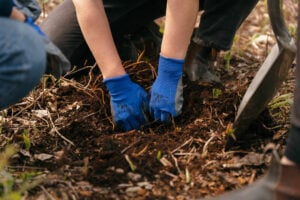Jack Miner – also known as Wild Goose Jack – founded the Jack Miner Migratory Bird Foundation located in Kingsville, Ont. in 1904. He became known as one of the world’s greatest naturalists and the father of the conservation movement in North America.
National Wildlife Week Act, reintroduced in the House of Commons April in 1947, honours Miner’s conservation efforts and encourages public interest in preserving the environment and wildlife from April 4 to April 10, which is Miner’s birthday.
“The beautiful thing about him, he was a friend to everybody and that’s what made him a hero,” says Tim Dobson, the current director at the sanctuary. “He didn’t care about how much money you had, what car you drove, the size of the house you lived in… and that was the magnetic attraction that brought people here. That’s what made Jack Miners the next big tourist trap next to Niagara Falls – because Jack Miner wasn’t going over the falls, he was creating the falls.”
Miner created a space that offers so much to see and do, what could a day at Jack Miner look like for you?
You are first greeted by Miner’s home where on either side sit two confined spaces that are typically inhabited by peacocks or eagles that need protecting.
We entered through the back door and walked past the kitchen to the dining room where he hosted dinners for special guests and officials that visited. Continuing to the large glass window that overlooks the feeding pond is a room filled with collections of various bird species and is considered one of his entertainment rooms.
From articles of his wardrobe and furniture, to pictures of him feeding the birds, you will see rooms filled with the many things that reflect Miner’s life journey and legacy.
Dobson says birds that were shot by a hunter would sometimes come to Miner’s backdoor to die. “They loved Jack Miners, it was their sanctuary,” he says.
The Sanctuary is a place that is home to many birds during their migrating journeys. Some of the geese that remain have angel wings – a condition that prevents them from flying – which happens when people feed them bread.
When you approach the feeding pond next to the museum there’s a bin filled with corn, wheat and barley. Fill a cup at this station and enjoy feeding the geese that are playing in the water or at the side of the pond.






